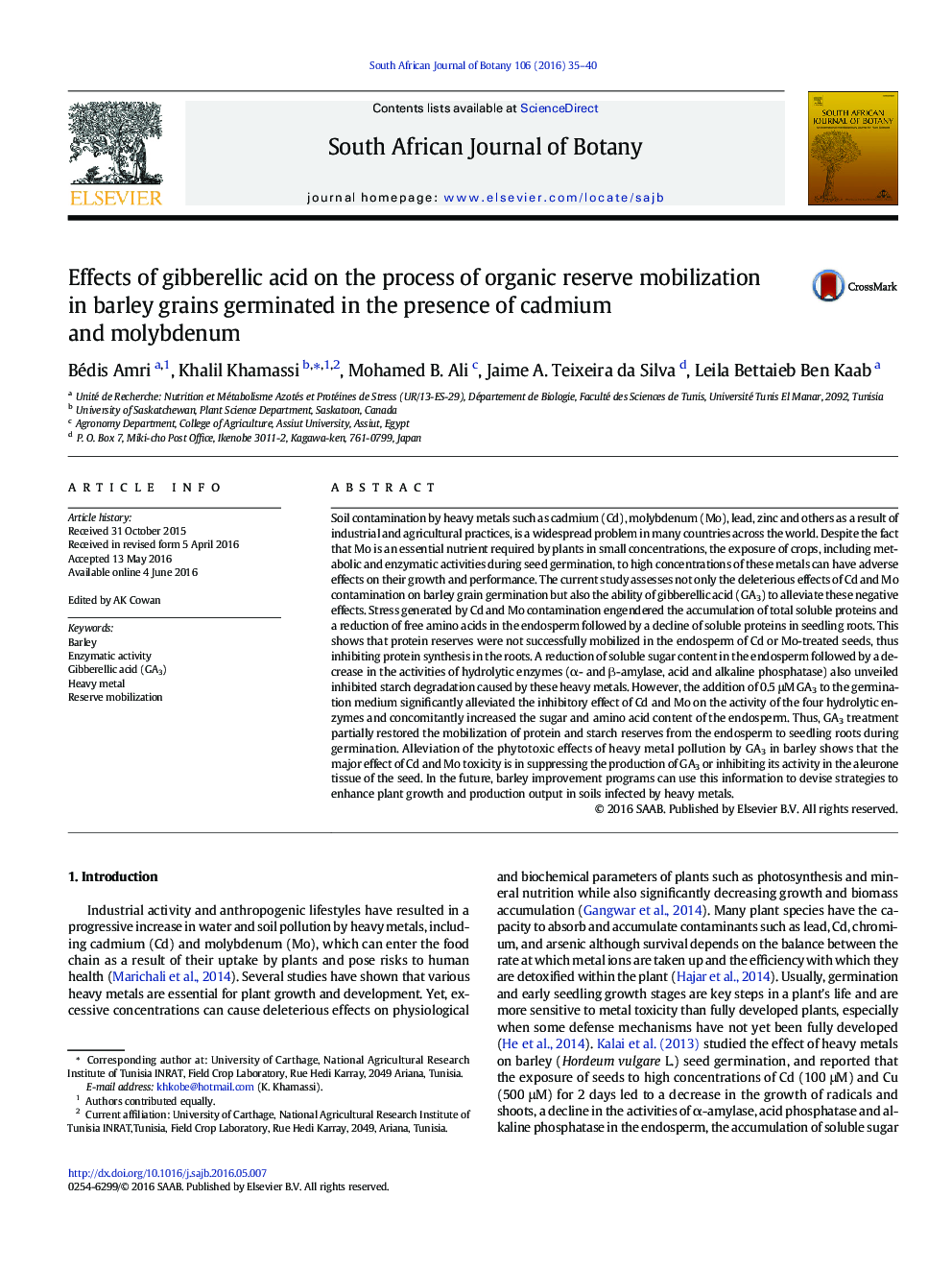| کد مقاله | کد نشریه | سال انتشار | مقاله انگلیسی | نسخه تمام متن |
|---|---|---|---|---|
| 4520186 | 1625152 | 2016 | 6 صفحه PDF | دانلود رایگان |
• Cadmium (Cd) and molybdenum (Mo) induced stress in barley seed germination.
• Total soluble proteins accumulated in the endosperm.
• Free amino acids and soluble sugar decreased in the endosperm.
• Activity of α- and β-amylase, and acid and alkaline phosphatase, decreased.
• 0.5 μM GA3 significantly alleviated the inhibitory effect of Cd and Mo.
Soil contamination by heavy metals such as cadmium (Cd), molybdenum (Mo), lead, zinc and others as a result of industrial and agricultural practices, is a widespread problem in many countries across the world. Despite the fact that Mo is an essential nutrient required by plants in small concentrations, the exposure of crops, including metabolic and enzymatic activities during seed germination, to high concentrations of these metals can have adverse effects on their growth and performance. The current study assesses not only the deleterious effects of Cd and Mo contamination on barley grain germination but also the ability of gibberellic acid (GA3) to alleviate these negative effects. Stress generated by Cd and Mo contamination engendered the accumulation of total soluble proteins and a reduction of free amino acids in the endosperm followed by a decline of soluble proteins in seedling roots. This shows that protein reserves were not successfully mobilized in the endosperm of Cd or Mo-treated seeds, thus inhibiting protein synthesis in the roots. A reduction of soluble sugar content in the endosperm followed by a decrease in the activities of hydrolytic enzymes (α- and β-amylase, acid and alkaline phosphatase) also unveiled inhibited starch degradation caused by these heavy metals. However, the addition of 0.5 μM GA3 to the germination medium significantly alleviated the inhibitory effect of Cd and Mo on the activity of the four hydrolytic enzymes and concomitantly increased the sugar and amino acid content of the endosperm. Thus, GA3 treatment partially restored the mobilization of protein and starch reserves from the endosperm to seedling roots during germination. Alleviation of the phytotoxic effects of heavy metal pollution by GA3 in barley shows that the major effect of Cd and Mo toxicity is in suppressing the production of GA3 or inhibiting its activity in the aleurone tissue of the seed. In the future, barley improvement programs can use this information to devise strategies to enhance plant growth and production output in soils infected by heavy metals.
Journal: South African Journal of Botany - Volume 106, September 2016, Pages 35–40
